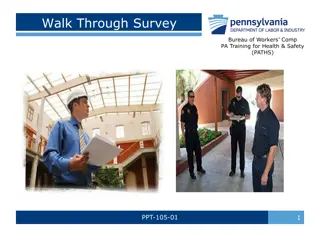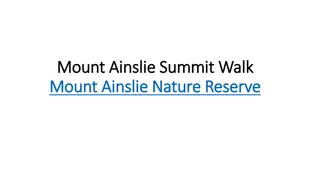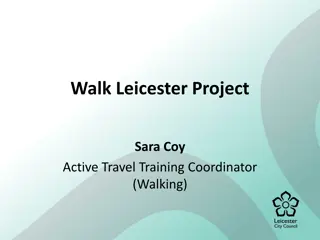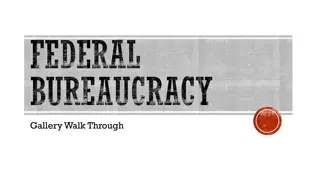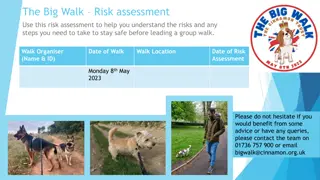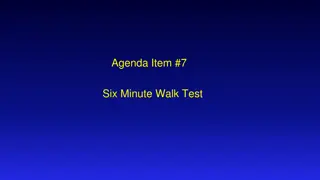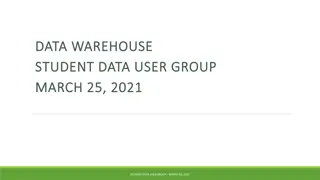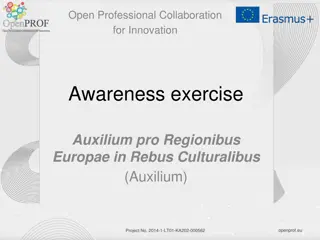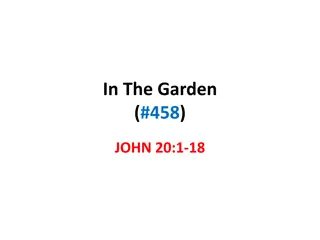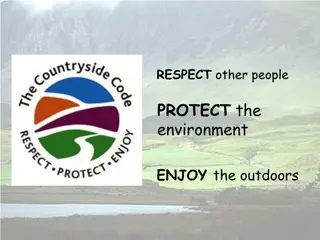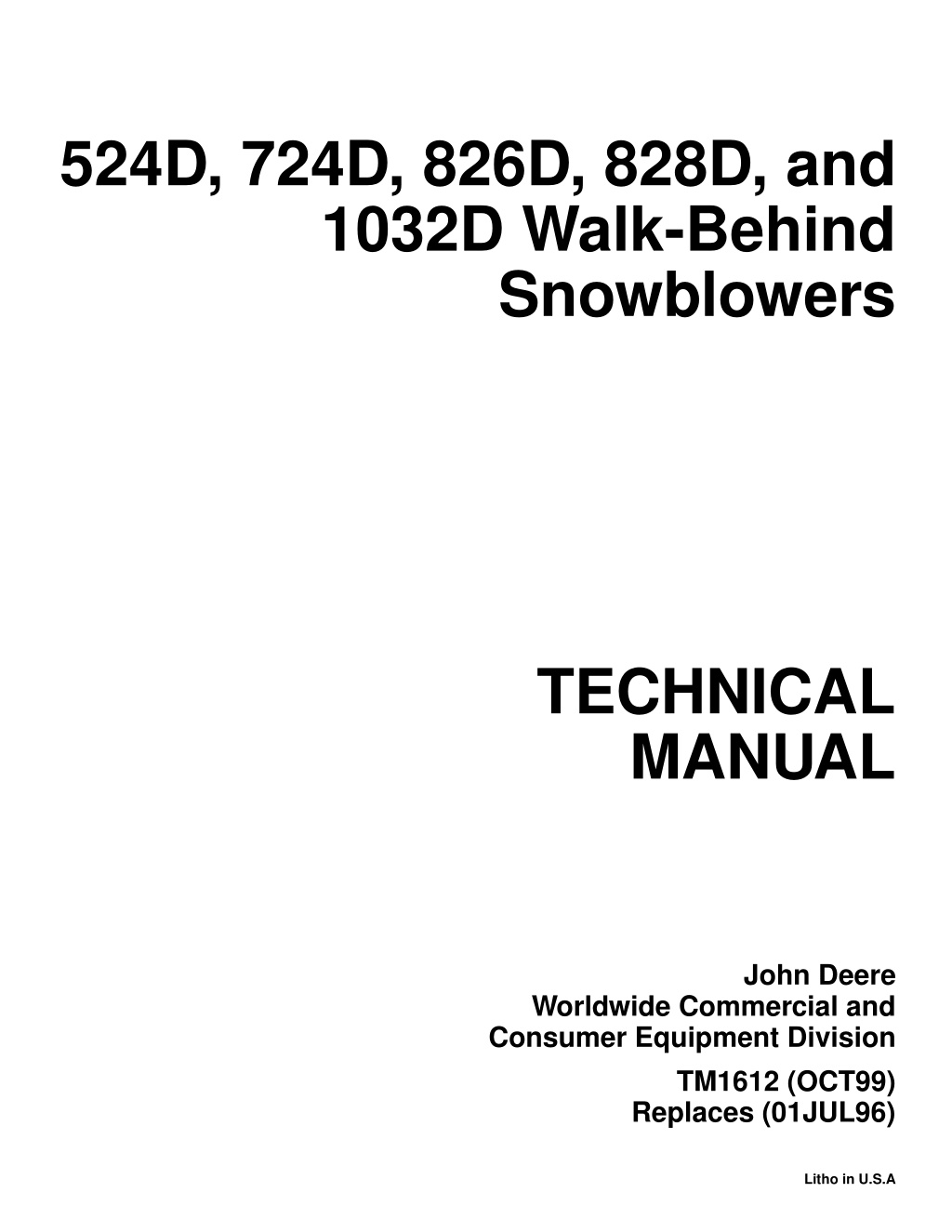
John Deere 524D, 724D, 826D, 828D and 1032D Walk-Behind Snowblowers Service Repair Manual Instant Download (TM1612)
Please open the website below to get the complete manualnn//
Download Presentation

Please find below an Image/Link to download the presentation.
The content on the website is provided AS IS for your information and personal use only. It may not be sold, licensed, or shared on other websites without obtaining consent from the author. Download presentation by click this link. If you encounter any issues during the download, it is possible that the publisher has removed the file from their server.
E N D
Presentation Transcript
524D, 724D, 826D, 828D, and 1032D Walk-Behind Snowblowers TECHNICAL MANUAL John Deere Worldwide Commercial and Consumer Equipment Division TM1612 (OCT99) Replaces (01JUL96) Litho in U.S.A
Walk-Behind Snowblowers Model 524D Model 724D Model 826D Model 828D Model 1032D
INTRODUCTION This technical manual is written for an experienced technician and contains sections that are specifically for this product. It is a part of a total product support program. Safety Specifications and The manual is organized so that all the information on a particular system is kept together. The order of grouping is as follows: Table of Contents Specifications Component Location System Schematic Theory of Operation Troubleshooting Chart Diagnostics Tests & Adjustments Repair Information Engine Electrical Note: Depending on the particular section or system being covered, not all of the above groups may be used. Power Train Each section will be identified with a symbol rather than a number. The pages within a section will be consecutively numbered. Headings in each section performed. A heading with no model designation applies to all the models in this manual. Headings followed by model designations apply only to those models. indicate the job being All information, illustrations and specifications in this manual are based on the latest information available at the time of publication. The right is reserved to make changes at any time without notice. We appreciate your input on this manual. To help, there are postage paid post cards included at the back. If you find any errors or want to comment on the layout of the manual please fill out one of the cards and mail it back to us. All information, illustrations and specifications in this manual are based on the latest information available at the time of publication. The right is reserved to make changes at any time without notice. Miscellaneous COPYRIGHT 1999 Deere & Co. John Deere Worldwide Commercial and Consumer Equipment Division Horicon, Wisconsin All rights reserved Previous Editions COPYRIGHT 1996,1995 1 - 1 9/30/99
https://www.ebooklibonline.com Hello dear friend! Thank you very much for reading. Enter the link into your browser. The full manual is available for immediate download. https://www.ebooklibonline.com
SAFETY HANDLE FLUIDS SAFELY-AVOID FIRES HANDLE CHEMICAL PRODUCTS SAFELY BE PREPARED FOR EMERGENCIES TS291 Direct exposure to hazardous chemicals can cause serious injury. Potentially hazardous chemicals used with John Deere equipment include such items as lubricants, coolants, paints, and adhesives. A Material Safety Data Sheet (MSDS) provides specific details on chemical products: physical and health hazards, safety procedures, and emergency response techniques. Check the MSDS before you start any job using a hazardous chemical. That way you will know exactly what the risks are and how to do the job safely. Then follow procedures and recommended equipment. TS227 DISPOSE OF WASTE PROPERLY Improperly disposing of waste can threaten the environment and ecology. Potentially harmful waste used with John Deere equipment include such items as oil, fuel, coolant, brake fluid, filters, and batteries. Use leakproof containers when draining fluids. Do not use food or beverage containers someone into drinking from them. Do not pour waste onto the ground, down a drain, or into any water source. Inquire on the proper way to recycle or dispose of waste from your local environmental or recycling center, or from your John Deere dealer. When you work around fuel, do not smoke or work near heaters or other fire hazards. Store flammable fluids away from fire hazards. Do not incinerate or puncture pressurized containers. Make sure machine is clean of trash, grease, and debris. Do not store oily rags; they can ignite and burn spontaneously. Be prepared if a fire starts. Keep a first aid kit and fire extinguisher handy. Keep emergency numbers for doctors, ambulance service, hospital, and fire department near your telephone. that may mislead 1 - 2 9/30/99
SAFETY USE SAFE SERVICE PROCEDURES PARK MACHINE SAFELY WEAR PROTECTIVE CLOTHING Wear close fitting clothing and safety equipment appropriate to the job. Prolonged exposure to impairment or loss of hearing. Wear a suitable hearing protective device such as earmuffs or earplugs to protect against objectionable or uncomfortable loud noises. Operating equipment safely requires the full attention of the operator. Do not headphones while operating machine. loud noise can cause TS230 wear radio or music Before working on the machine: 1. Lower all equipment to the ground. 1. Stop the engine and remove the key. 1. Disconnect the battery ground strap. 1. Hang a DO NOT OPERATE tag in operator station. SUPPORT MACHINE PROPERLY AND USE PROPER LIFTING EQUIPMENT TS229 SERVICE MACHINES SAFELY If you must work on a lifted machine or attachment, securely support the machine or attachment. Do not support the machine on cinder blocks, hollow tiles, or props that may crumble under continuous load. Do not work under a machine that is supported solely by a jack. Follow recommended procedures in this manual. Lifting heavy components incorrectly can cause severe injury or machine damage. Follow recommended procedure for removal and installation of components in the manual. JD6508 USE PROPER TOOLS Use tools appropriate to the work. Makeshift tools and procedures can create safety hazards. Use power tools only to loosen threaded parts and fasteners. For loosening and tightening hardware, use the correct size tools. DO NOT use U.S. measurement tools on metric fasteners. Avoid bodily injury caused by slipping wrenches. Use only service parts meeting John Deere specifications. WORK IN CLEAN AREA Before starting a job 1. Clean work area and machine: 1. Make sure you have all necessary tools to do your job. 1. Have the right parts on hand. 1. Read all instructions thoroughly; do not attempt shortcuts. 1 - 3 9/30/99
SAFETY fibers assemblies, clutch plates, and some gaskets. The asbestos used in these components is usually found in a resin or sealed in some way. Normal handling is not hazardous as long as asbestos is not generated. Avoid creating dust. Never use compressed air for cleaning. Avoid brushing containing asbestos. When approved respirator. A special vacuum cleaner is recommended to clean asbestos. If not available, apply a mist of oil or water on the material containing asbestos. Keep bystanders away from the area. are brake pads, brake band and lining ILLUMINATE WORK AREA SAFELY Illuminate your work area adequately but safely. Use a portable safety light for working inside or under the machine. Make sure the bulb is enclosed by a wire cage. The hot filament of an accidentally broken bulb can ignite spilled fuel or oil. airborne dust containing or grinding servicing, material wear WORK IN VENTILATED AREA WARNING: California Proposition 65 Warning Diesel engine exhaust and some of its constituents are known to the State of California to cause cancer, birth defects, and other reproductive harm. Gasoline engine exhaust from this product contains chemicals known to the State of California to cause cancer, birth defects, or other reproductive harm. an SERVICE TIRES SAFELY Explosive separation of a tire and rim parts can cause serious injury or death. Do not attempt to mount a tire unless you have the proper equipment and experience to perform the job. Always maintain the correct tire pressure. Do not inflate the tires above the recommended pressure. Never weld or heat a wheel and tire assembly. The heat can cause an increase in air pressure resulting in a tire explosion. Welding can structurally weaken or deform the wheel. When inflating tires, use a clip-on chuck and extension hose long enough to allow you to stand to one side and NOT in front of or over the tire assembly. Use a safety cage if available. Engine exhaust fumes can cause sickness or death. If it is necessary to run an engine in an enclosed area, remove the exhaust fumes from the area with an exhaust pipe extension. If you do not have an exhaust pipe extension, open the doors and get outside air into the area. REMOVE PAINT BEFORE WELDING OR HEATING Avoid potentially toxic fumes and dust. Hazardous fumes can be generated when paint is heated by welding, soldering, or using a torch. Do all work outside or in a well ventilated area. Dispose of paint and solvent properly. Remove paint before welding or heating: If you sand or grind paint, avoid breathing the dust. Wear an approved respirator. If you use solvent or paint stripper, remove stripper with soap and water before welding. Remove solvent or paint stripper containers and other flammable material from area. Allow fumes to disperse at least 15 minutes before welding or heating. Check wheels for low pressure, cuts, bubbles, damaged rims or missing lug bolts and nuts. AVOID HARMFUL ASBESTOS DUST :Avoid breathing dust that may be generated when handling components containing Inhaled asbestos fibers may cause lung cancer. Components in products that may contain asbestos asbestos fibers. 1 - 4 9/30/99
FRICTION DRIVE CLUTCH ADJUSTMENT828D & 1032D POWER TRAIN TESTS AND ADJUSTMENTS FRICTION DRIVE CLUTCH ADJUSTMENT 828D & 1032D Adjust friction clutch to compensate for wear of friction disk when slippage occurs. 1. Park snowblower on a hard, smooth surface. Stop engine, remove key, wait for moving parts to stop and remove wire from spark plug to prevent accidental starting. Clutch Lever Selector Lever c CAUTION M78995 Remove enough fuel from fuel tank so that no spillage will occur when unit is tipped up onto housing. 4. Put speed selector lever in 1 (First gear). 5. Make sure friction clutch lever is disengaged. Clutch Cable Adjustment Lock Nut Housing M766081 M79008 6. Turn drive wheels by hand. Tighten adjustment lock nut until wheels begin to drag. 7. Engage and release friction clutch lever to align clutch linkage. 8. Repeat procedure as necessary. 9. When wheel drag is obtained with linkage alignment, loosen adjustment lock nut 3 full turns. Drive wheels will then turn freely. 2. Tip machine forward onto auger housing. . Access Panel Upper Bolts NOTE: Insure that clutch cable is slack when clutch lever is disengaged. Clutch lever should move approximately 13 mm (0.5 in.) before clutch mechanism is activated. Lower Bolts 10. Engage clutch lever and check to make sure that friction disk engages friction plate. 11. Replace cover. Tilt machine back onto wheels and reconnect spark plug. M79009 3. Remove 2 upper bolts and loosen 2 lower bolts to remove access panel. 5 - 13 9/30/99
FRICTION DRIVE CLUTCH ADJUSTMENT524D, 724D & 826D POWER TRAIN FRICTION DRIVE CLUTCH ADJUSTMENT 524D, 724D & 826D 1. Park snowblower on a hard, smooth surface. Stop engine, remove key, wait for moving parts to stop and remove wire from spark plug to prevent accidental starting. Bracket c CAUTION 3.18-4.76 mm Remove enough fuel from fuel tank so that no spillage will occur when unit is tipped up onto housing. 0.125-0.188 in. Spring Pin M76870 826D Housing Bracket M79008 3.18-4.76 mm 0.125-0.188 in. 2. Tip machine forward onto auger housing. Spring Pin M76922 Access Panel 524D Upper Bolts 4. Check for proper adjustment by measuring the distance between the spring pin and the friction rod bracket. With the clutch engaged the distance should be 3.18-4.76 mm (0.125-0.188 in.). Lower Bolts M76871 3. Remove 2 upper bolts, and loosen 2 lower bolts. Remove access panel. 5 - 14 9/30/99
DRIVE CHAIN ADJUSTMENT828D & 1032D POWER TRAIN . Upper Bolts Access Panel Retaining Nut Cable Adjuster Lower Bolts M76867 5. If adjustment is not correct loosen the retaining nut on the cable adjuster. Turn the adjuster clockwise to increase the adjustment or counterclockwise to decrease the adjustment. 6. Tighten the retaining nut when adjustment is correct. 7. Replace cover. Tilt machine back onto wheels and reconnect spark plug. M79009 3. Remove 2 upper bolts and loosen 2 lower bolts to remove access panel. 4. Drive chain and driven chain should be taut with little or no play. DRIVE CHAIN ADJUSTMENT 828D & 1032D 1. Park snowblower on a hard, smooth surface. Stop engine, remove key, wait for moving parts to stop and remove wire from spark plug to prevent accidental starting. Drive Chain Driven Chain Nut Nut c CAUTION Remove enough fuel from fuel tank so that no spillage will occur when unit is tipped up onto housing. M79014 5. To adjust chain tightness, loosen nuts and move reduction sprocket up or down equally in slot as necessary. 6. Tighten nuts to 20 N m (180 lb-in.). 7. Install access panel. Housing M79008 2. Tip machine forward onto auger housing. 5 - 15 9/30/99
DRIVE CONTROL LINKAGE828D & 1032D POWER TRAIN DRIVE CONTROL LINKAGE 828D & 1032D Use the diagram below as a reference for component location. The drive control linkage has no adjustments. If the unit is not operating correctly, i.e. not enough belt tension, replace the spring and check the linkage and assembly, or idler assembly. Handle Housing Arm Idler M79008 Drive Belt 2. Tip machine forward onto auger housing. Interlock Brake Cable Spring Linkage Brake Spring M76683 Driven Sheave Shift Lever For brake adjustment. (See IMPELLER BRAKE ADJUSTMENT 828D & 1032D on page 12 of MISCELLANEOUS SECTION.) M78995 SPEED / SHIFT LINKAGE ADJUSTMENT 828D & 1032D SN: ( - 190000) 1. Park snowblower on a hard, smooth surface. Stop engine, remove key, wait for moving parts to stop and remove wire from spark plug to prevent accidental starting. 3. Move shift lever into 6 (6th gear) position. Cotter Pin c CAUTION Shift Rod Remove enough fuel from fuel tank so that no spillage will occur when unit is tipped up onto housing. Adjust. Nut Lower Shift Rod M85220 4. Remove cotter pin from shift rod stud to remove shift rod assembly from shift lever linkage. 5. Loosen adjustment nut. 6. Push lower shift rod into housing as far as it will go and hold it in this position until rod adjustment is made. 5 - 16 9/30/99
SPEED / SHIFT LINKAGE ADJUSTMENT828D & 1032D SN: (190001 - ) POWER TRAIN SPEED / SHIFT LINKAGE ADJUSTMENT 828D & 1032D SN: (190001 - ) 1. Park snowblower on a hard, smooth surface. Stop engine, remove key, wait for moving parts to stop and remove wire from spark plug to prevent accidental starting. 13 mm (0.5 in.) Shift Lever Linkage Lower Shift Rod c CAUTION Remove enough fuel from fuel tank so that no spillage will occur when unit is tipped up onto housing. M85223 7. Adjust the length of shift rod until it is approximately 13 mm (0.5 in.) away from the shift lever linkage hole. 8. Release lower shift rod and install shift rod into shift lever linkage. 9. Install cotter pin into shift rod. Bend tines of cotter pin over. 10. Tighten nut to secure shift rod. Access Panel Friction Drive Lever Housing M79008 Neutral Speed Select Lever 2. Tip machine forward onto auger housing and remove access panel. Shift Lever M78995 NOTE: The neutral position ( N ) of the speed selector lever can be anywhere between R1 and the first forward speed ( 1 ). With speed selector lever in Neutral ( N ) and the friction drive lever engaged, the unit should not creep forward or backward. 11. Return unit to its upright operating position. 12. Start engine and check for proper operation of the speed selector lever: put speed selector lever in Neutral ( N ), move friction drive lever to engaged position, unit should not creep forward or backward. 13. If necessary, repeat steps 1-11 to eliminate any neutral creep. M96143 3. Move shift lever to the 6 (6th gear) position. 5 - 17 9/30/99
SPEED / SHIFT LINKAGE ADJUSTMENT828D & 1032D SN: (190001 - ) POWER TRAIN Shift Lever Linkage Shift Lever Linkage Shift Rod Quick Pull Pin Shift Rod Adjustment Stud Headlight Housing Mx1515 8. Turn adjustment stud on top end of shift rod to align with shift lever linkage, then fasten with quick pull pin as shown. Mx1515 IMPORTANT: housing, install quick pull pin so open ends point up toward Operator s Station. To prevent damage to headlight Friction Drive Lever 4. Remove quick pull pin to remove adjustment stud from shift lever linkage. 5. Push shift rod down into drive housing as far as it will go and hold it in this position while rod adjustment is made in following steps. Neutral Speed Select Lever Friction Wheel Rubber Shift Rod Quick Pull Pin M96143 Flat Washer NOTE: The neutral position ( N ) of the speed selector lever can be anywhere between R1 and the first forward speed ( 1 ). Traction Drive Linkage With speed selector lever in Neutral ( N ) and the friction drive lever engaged, the unit should not creep forward or backward. Mx1528 9. Return unit to its upright operating position. 10. Start engine and check for proper operation of the speed selector lever: put speed selector lever in Neutral ( N ), move friction drive lever to engaged position, unit should not creep forward or backward. 11. If necessary, repeat steps 1-11 to eliminate any neutral creep. 12. Install access panel. IMPORTANT: To prevent damage to friction wheel rubber, install quick pull pin so open ends point away from friction wheel rubber. This will prevent open ends from gouging the rubber. 6. Check that quick pull pin is installed with open ends away from friction wheel rubber. If not, change it to correct position shown once adjustment is complete. 7. Push on friction wheel to ensure all slack is taken out of linkage. Hold this position. 5 - 18 9/30/99
SPEED / SHIFT LINKAGE ADJUSTMENT524D, 724D, & 826D POWER TRAIN SPEED / SHIFT LINKAGE ADJUSTMENT 524D, 724D, & 826D 6. When the bracket is parallel to the case tighten the rod nuts. 7. Tilt machine back onto wheels and reconnect spark plug. 8. Start engine and check for proper operation of the speed selector lever. QUICK CHECK 1. Park snowblower on a hard, smooth surface. Stop engine, remove key, wait for moving parts to stop. Remove wire from spark plug to prevent accidental starting. ADJUSTMENT If additional adjustment is required, use the following procedure: 1. Park snowblower on a hard, smooth surface. Stop engine, remove key, wait for moving parts to stop and remove wire from spark plug to prevent accidental starting. c CAUTION Remove enough fuel from fuel tank so that no spillage will occur when unit is tipped up onto housing. c CAUTION 2. Move the gear selector to the 1 (first gear) position. Remove enough fuel from fuel tank so that no spillage will occur when unit is tipped up onto housing. 2. Move the gear selector to the R2 (second gear reverse) position. Housing M79008 Housing 3. Tip machine forward onto auger housing. Gear Case Edge M79008 Selector Rod 3. Tip machine forward onto auger housing. Nuts Shift Bracket Edge Shift Bracket Nuts M76869 4. With the selector in the 1 (first gear) position the edge of the shift bracket should be parallel to the edge of the gear case. 5. If not parallel loosen the nuts on the selector rod and adjust the shift bracket accordingly. M76869 4. Loosen the nuts on the selector rod. 5 - 19 9/30/99
V-BELTS POWER TRAIN REPAIR V-BELTS V-belts transmit power by friction and a wedging action against the sheaves. Belts are subject to wear through periodic heavy load and should be checked often to be certain belt wear is normal. All belts and sheaves wear with use. Normal wear can be recognized as even wear both on the belt and sides of the sheave. A slight raveling of the belt covering does not indicate premature failure. Cut off the raveling if the covering peels at the lap. Check for the causes of unusual belt wear. Lumpy V-belts can cause vibration. Check belts for swells and lumps. Install only factory-recommended V-belts of the proper length. Access Panel Upper Bolts Lower Bolts M76871 5. Remove 2 upper bolts, and loosen 2 lower bolts. Remove access panel. SHEAVES Examine sheaves for bent or chipped sidewalls. Check also for excessive sidewall wear. Damaged sheaves cause rapid belt wear. A bent sheave reduces the gripping power of the belt. Replace sheaves having any of the above defects. Check to be sure dirt has not lodged and packed in sheave V-groove. Loosen dirt so it will fallout when machine is started. Friction Disk Hex Shaft Reverse Limiting Spring Pin PULLEY ALIGNMENT AND DRIVE BELT TENSION Misaligned sheaves will result in shorter belt life. Use a straightedge to check sheave alignment. More belts fail from under-tension than over-tension. Loose belts slip, heat and burn, causing premature failure. Replace weak or stretched idler springs if belt drives are so equipped. Excessive belt tension stretches and weakens belts. It also puts an excessive load on shaft bearing. Adjust belts to tension specified in operator s manual for each machine. M76892 6. Slide the hex shaft right to remove end play. 7. Slide the friction disk left against the reverse limiting spring pin. 8. Tighten the nuts on the selector rod. 9. Confirm correct operation: With the selector in R2 the hub of the friction disk should contact the reverse limiting spring pin. The F6 (sixth gear) setting should not result in the friction disk traveling beyond the diameter of the friction plate. 10. Replace the access panel, and return the machine to operating position. DRIVE BELT CLEANING Clean belts by wiping them with a clean cloth. Immediately wipe off any spilled oil or grease. Do not use solvents because they will soften the belt and cause the clutch to grab. Do not use belt dressings. Dressings often give only temporary gripping action, while softening the belt and causing eventual deterioration, and shorter belt life. Dressings also will cause the clutch to grab. 5 - 20 9/30/99
FRICTION DRIVE BELT REPLACEMENT828D & 1032D POWER TRAIN FRICTION DRIVE BELT REPLACEMENT 524D, 724D, & 826D 1. Remove auger drive belt. (See AUGER DRIVE BELT REPLACEMENT 524D, 724D, & 826D on page 21 of MISCELLANEOUS SECTION.) c CAUTION DO NOT attempt to clean the belts while machine is running. Loosen tension as much as possible when removing and replacing V-belts. Check alignment and condition of sheaves as outlined above. Place belt in the sheave groove by hand. Engine Sheave Friction Drive Belt Idler IMPORTANT: Never pry belt over edge of sheave because this may rupture shorten belt life. belt cords and Friction Drive Belt FRICTION DRIVE BELT REPLACEMENT 828D & 1032D 1. Remove auger drive belt. (See AUGER DRIVE BELT REPLACEMENT 828D & 1032D on page 19 of MISCELLANEOUS SECTION.) Auger Removed for Clarity M76898 Drive Belt 2. Remove the friction drive belt and install new belt. It is necessary to hold back the friction drive belt idler to replace the belt. 3. Install auger drive belt. 4. Reassemble to specification. Idler WHEEL REPLACEMENT 828D & 1032D 1. Park snowblower on a hard, smooth surface. Stop engine, remove key, wait for moving parts to stop and remove wire from spark plug to prevent accidental starting. M85212 2. Pull back spring loaded idler and remove friction drive belt from engine drive sheave. Install new belt. 3. Install auger drive belt. 4. Reassemble to specification. c CAUTION Remove enough fuel from fuel tank so that no spillage will occur when unit is tipped up onto housing. 5 - 21 9/30/99
Suggest: If the above button click is invalid. Please download this document first, and then click the above link to download the complete manual. Thank you so much for reading
WHEEL REPLACEMENT524D, 724D, & 826D POWER TRAIN Housing Housing M79008 M79008 2. Tip machine forward onto auger housing. 2. Tip machine forward onto auger housing. Cap Screws (Nuts) Nut Wheel Cap Screw M76658 M76868 3. Remove cap screws (nuts on older models) securing wheel. 4. Replace wheel and secure with 4 cap screws (nuts). Torque to 67 N m (50 lb-ft.). 5. Tilt unit back on wheels. 6. Reconnect spark plug. Check engine oil. 3. Remove nut and cap screw. 4. Replace wheel, and secure with cap screw and nut. Torque to 17 N m (12.5 lb-ft.). 5. Tilt unit back on wheels. 6. Reconnect spark plug. Check engine oil. WHEEL REPLACEMENT 524D, 724D, & 826D 1. Park snowblower on a hard, smooth surface. Stop engine, remove key, wait for moving parts to stop and remove wire from spark plug to prevent accidental starting. c CAUTION Remove enough fuel from fuel tank so that no spillage will occur when unit is tipped up onto housing. 5 - 22 9/30/99
https://www.ebooklibonline.com Hello dear friend! Thank you very much for reading. Enter the link into your browser. The full manual is available for immediate download. https://www.ebooklibonline.com

